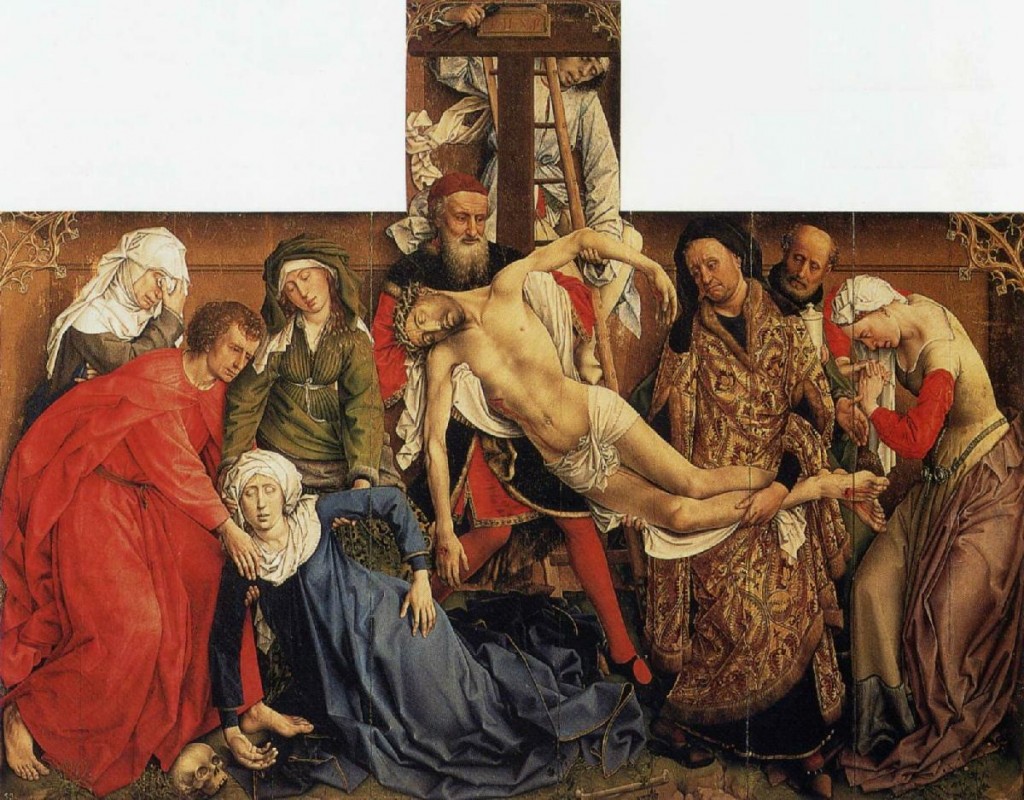
“Rogier [van der Weyden], like Jan van Eyck, could faithfully reproduce every detail, every hair and every stitch. Nevertheless, his picture [The Descent from the Cross] does not represent a real scene. He has placed his figures on a kind of shallow stage against a neutral background. Remembering Pollaiuolo’s problems [with The Martyrdom of St. Sebastian], we can appreciate the wisdom of Rogier’s decision. He, too, had to make a large altar-painting to be seen from afar, and had to display the sacred theme to the faithful in the church. It has to be clear in outline, and satisfying as a pattern. Rogier’s picture fulfills these requirements without looking forced and self-conscious as does Pollaiouolo’s… In this way, by translating the main ideas of Gothic art into the new, lifelike style, Rogier did a great service to northern art. He saved much of the tradition of lucid design that might otherwise have been lost under the impact of Jan van Eyck’s discoveries. Henceforward northern artists tried, each in his own way, to reconcile the new demands on art with its old religious purpose.”
Ernst H. Gombrich, “Chapter 14: Tradition and Innovation: The North,” The Story of Art, 15th edition
